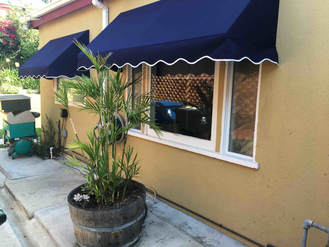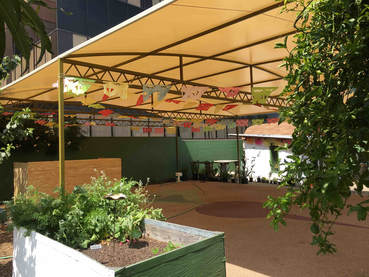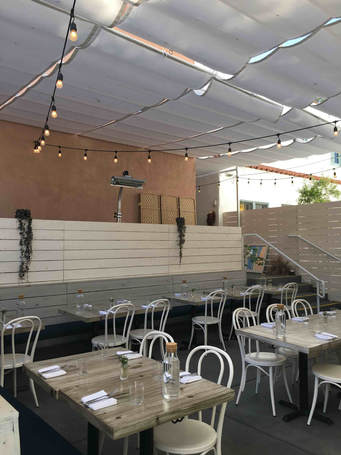To start off, awning fabrics come in a variety of types including but not limited to acrylics, canvas, vinyl, and polyvinyl. Your awning fabric selection is also dependent on your environment – rainy, sunny, snowy. If you live in an area where there is a lot of rain, you will want a fabric that is coated with water repellents and is naturally water resistant like an acrylic textile.

If you live in a sunny area with little rain, then using a vinyl composite or plain vinyl option is viable as well. Vinyl is cost efficient and is waterproof. This is a common textile used in awning construction and is also inherently fire retardant.

If you’re thinking about using something sturdy like a metal, that’s also an option as well. Some awnings can be created using metal, but this is not something you often see. Metal awnings are big and might be good for commercial use but keep in mind, these are costly and take a lot of maintenance to help keep it from rusting.

The important thing to remember is that awning fabrics are designed to repel water, be uv ray resistant, mold and mildew resistant, and tear resistant among other features. Also, keep in mind that not all awning fabrics are created equally. That’s why doing your research, understanding both your operating and weather environment – whether it’s for business, office, or home or rain or shine – and consulting a professional is an important step in choosing the right awning fabric.

